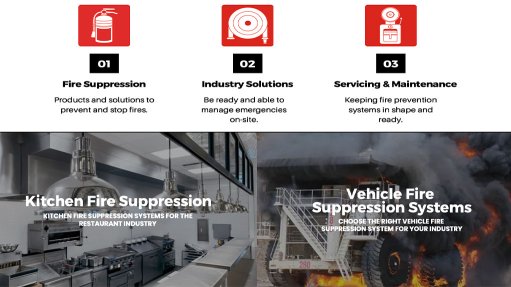Services of the Future
This article has been supplied.
By Elijah Daniel, Digital & Software Business Leader, Sub-Saharan Africa at Schneider Electric
The continued proliferation of advanced technology solutions is undoubtedly shaping the way companies’ services and maintenance teams operate and interact with customers. According to research group, McKinsey, Automation and AI (artificial intelligence) for example are streamlining repetitive tasks, allowing services teams to focus on more complex issues that require human intervention,
It is good news indeed as technologies and solutions like remote monitoring and predictive maintenance which include machine learning (ML) algorithms allow for proactive servicing and reduced downtime.
However, to contextualise the above, it is important that we unpack what digital tools and resources are available to services team, and how it optimises or impact service delivery.
1. AR and VR
Virtual Reality (VR) and Augmented Reality (AR) are significantly improving the work of services and maintenance teams. For example, VR provides immersive training environments, allowing technicians to practice complex tasks and familiarise themselves with equipment in a safe, controlled setting.
Augmented by the Industrial Internet of Things (IIoT), AR provides maintenance workers with powerful insights, enhancing situational awareness and directing them to problem sources swiftly.
Beyond this, it carries the potential to transform maintenance schedules into genuinely condition-based programmes. The use of connected devices is vital here, it detects early signs of impending issues and optimise work assignments to eliminate unnecessary tasks.
Customers can also use AR to obtain the necessary support from a services representative. The technology will allow a technician to inspect the faulty equipment and provide the next steps on whether it can be resolved remotely, or a site visit is necessary.
2. Customer Portals
Customer portals act as a central online hub where customers can schedule service, view past bills and reports, see pricing, download product datasheets, and connect with support.
It’s also where customers get an overview of all their assets and service contracts.
3. Standardised Reporting
By streamlining reporting, customers receive one report, regardless of service performed. This cuts down on paperwork and gives a consistent, clear view of all the work performed.
Furthermore, standardised reporting coupled with a customer portal give customers on-demand access to their data, saving them time and reducing the complexity of managing the information.
Standardised reporting also reduces Services’ teams administrative time – it’s a win-win for both parties.
4. Variation Orders
More than often, a services representative will uncover additional work that wasn’t in the original scope. Here, a services representative will usually have to schedule a follow-up visit, a step that wastes both time and money. Digital variation order tools allow services representatives to generate a quote and provide the service immediately, if possible.
5. Mobile Apps
A mobile device is an easily accessible tool that provides services representatives with information on new job assignments, install base data, updated schedules, and upload project-specific information such as time and expenses, thus improving their overall efficiency in meeting customer needs.
6. Third-Party Transparency
Services representatives may work with external partners to complete some tasks. Historically, these third parties did not have access to the central customer platform. New tools provide external vendors access to these systems, enabling them to schedule work orders, put through spare part orders and capture project data. Again, customers benefit from increased efficiency and a more streamlined experience.
Digital tools and resources are fast defining the services teams of the future, allowing them to readily meet the demands of a customer-centric industry where quick turnaround and expert service delivery are key.
Article Enquiry
Email Article
Save Article
Feedback
To advertise email advertising@creamermedia.co.za or click here
Press Office
Announcements
What's On
Subscribe to improve your user experience...
Option 1 (equivalent of R125 a month):
Receive a weekly copy of Creamer Media's Engineering News & Mining Weekly magazine
(print copy for those in South Africa and e-magazine for those outside of South Africa)
Receive daily email newsletters
Access to full search results
Access archive of magazine back copies
Access to Projects in Progress
Access to ONE Research Report of your choice in PDF format
Option 2 (equivalent of R375 a month):
All benefits from Option 1
PLUS
Access to Creamer Media's Research Channel Africa for ALL Research Reports, in PDF format, on various industrial and mining sectors
including Electricity; Water; Energy Transition; Hydrogen; Roads, Rail and Ports; Coal; Gold; Platinum; Battery Metals; etc.
Already a subscriber?
Forgotten your password?
Receive weekly copy of Creamer Media's Engineering News & Mining Weekly magazine (print copy for those in South Africa and e-magazine for those outside of South Africa)
➕
Recieve daily email newsletters
➕
Access to full search results
➕
Access archive of magazine back copies
➕
Access to Projects in Progress
➕
Access to ONE Research Report of your choice in PDF format
RESEARCH CHANNEL AFRICA
R4500 (equivalent of R375 a month)
SUBSCRIBEAll benefits from Option 1
➕
Access to Creamer Media's Research Channel Africa for ALL Research Reports on various industrial and mining sectors, in PDF format, including on:
Electricity
➕
Water
➕
Energy Transition
➕
Hydrogen
➕
Roads, Rail and Ports
➕
Coal
➕
Gold
➕
Platinum
➕
Battery Metals
➕
etc.
Receive all benefits from Option 1 or Option 2 delivered to numerous people at your company
➕
Multiple User names and Passwords for simultaneous log-ins
➕
Intranet integration access to all in your organisation



















